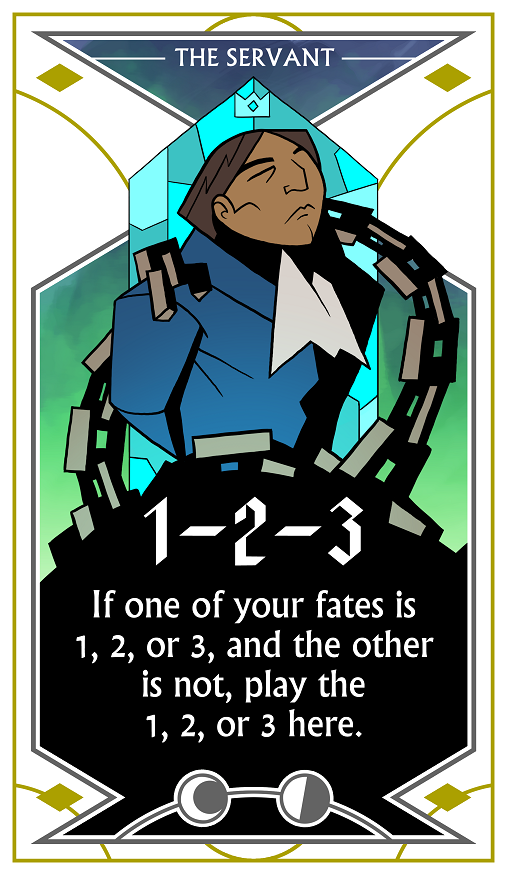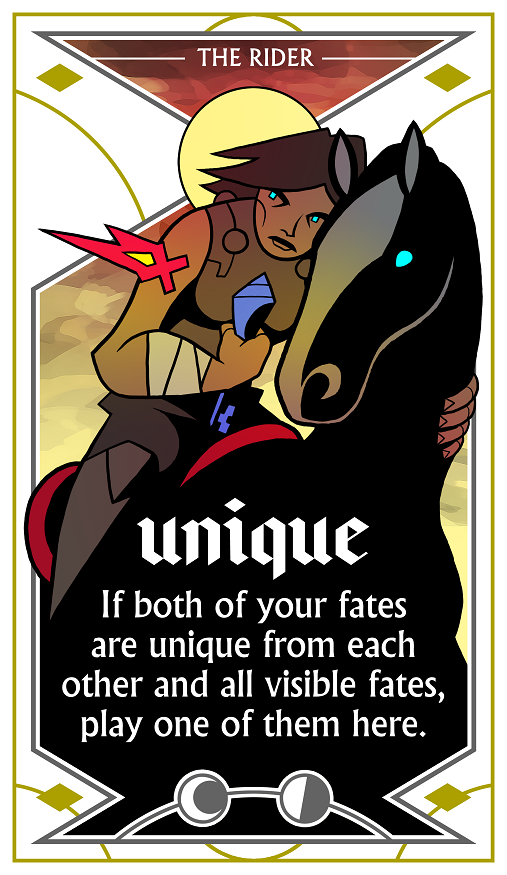Dev Diary: Shipwreck Lore (2 of 3)
Meromorph Games
The Shipwreck Arcana is a real game about a fictional deck of cards. The deck exists in a world which is described only as "sunken" or "drowned." The world's history is unknown -- but it is hinted at by the fictional illustrator of the tarot deck, providing a glimpse of the history that surrounds it.
There are two discernible plots which influence the card illustrations. The second is a classical tragedy: the tale of The Prophet.
His gift was sight: not of the world before him, but of the years. This gift he employed in the service of peasants and patrons, of cooks and queens. His eyes burned with untold horizons, and yet: a dark cloud gathered.
Obstructing his sight came a doom -- his own doom. It was impenetrable and inescapable. It drew nearer, obstructing other fates in its path. The Prophet set out in search of salvation, begging every patron past and present for aid in these dire straits, but only one had the answer: The Lord, Akela.
He basked upon a throne built over many years and many wars, each of them won under The Prophet's guidance. His sword carved stone Asunder. His fleet canvassed the sea. And in his throne room sat The Chalice, which never runs dry.
It came back with Lord Akela from a crumbling kingdom across the sea. None had dared to taste it, for The Prophet himself had warned that its ichor was not for mortals. But now, faced with his doom, The Prophet wished to be mortal no longer. Let me taste it, he begged The Lord, that I might survive my doom and serve you forever.
Did The Lord acquiesce? Or did The Prophet steal a sip of the brew? For certainly it touches his lips. It drips from them still, a venomous slaver running down wicked fangs. He is no longer mortal, The Prophet: but his doom was never mortality. Folly and fear lead him to drink deep, and become The Beast.
His appetite and his blind anger soon grew unchecked, and he returned to visit those he had once prophesied for. As each patron met their doom, The Lord heard, and grew angry. He sent his two greatest warriors to curb The Beast's reign. He sent The Huntress, and her lover.
He should have sent more.
The Huntress survived, leaving her sword behind to pierce The Beast's shoulder. Of her partner, nothing so heartening could be said. Griefstruck, The Huntress journeyed to The Shore of the sea and cast in a medallion: memento of her loss. It sank beneath the waves and found its rest in The Belltower.
The Huntress might think her tale ends here, but if she could see down to the depths, her error would be apparent. The Belltower once stood on the very same shore, guarding the boundary between land and sea -- between life and something else. Its fall heralded the end: the sea's rise, the world's ebb. Its foundation still crusts The Shore, while the tower's wreckage lies lost and buried in The Deep.
Its bell, long silent, rang out once as The Huntress' medallion struck it.
Upon The Shore, a pause. The Huntress had departed, her footprints washed away. Yet other prints have appeared, trekking into the water. Travelling from life to something else... or perhaps returning.
A mark upon her back shows how far she has come, how far she has yet to go. A face hidden beneath sea-soaked hair would be unfamiliar to even The Huntress now. She is The Stranger. She wields no sword or rifle, carries no weapons to strike mortal foes -- for she has not returned to hunt anything mortal.
The Beast lies before her like a heart before an arrow. She has been loosed by the sea into a world one step closer to ruin. She will find her mark soon.
















































